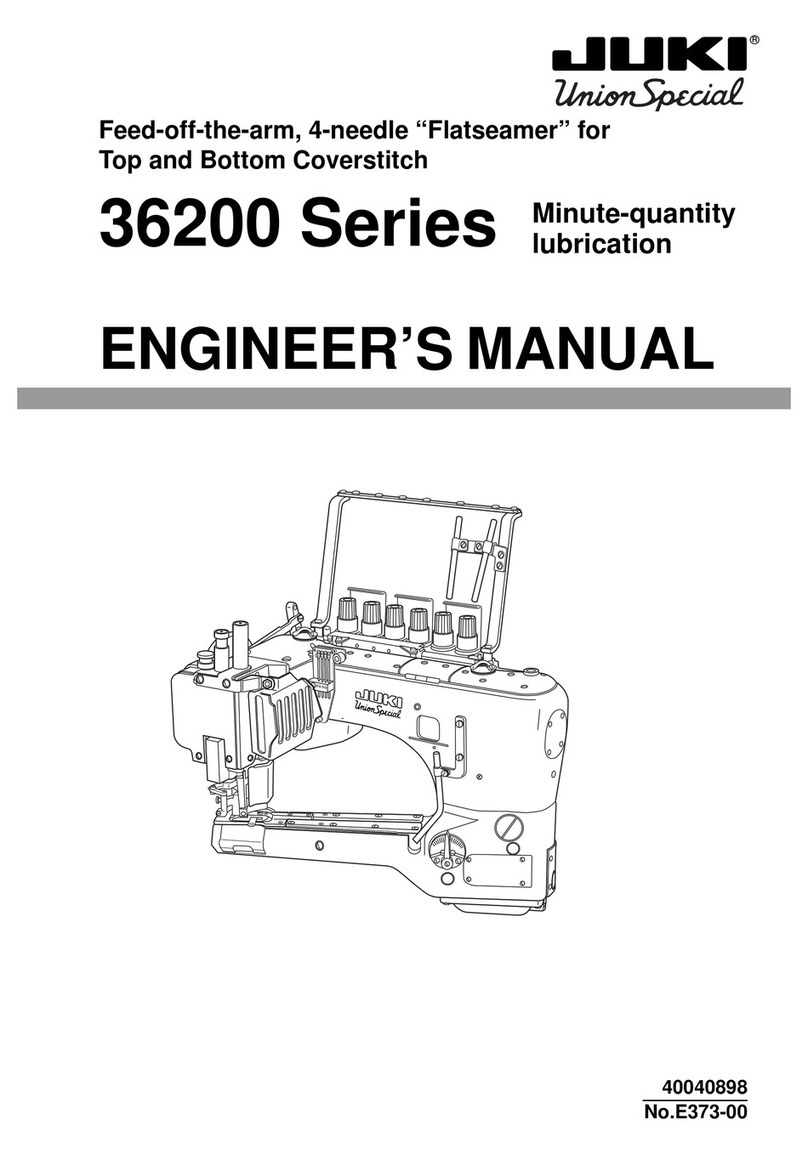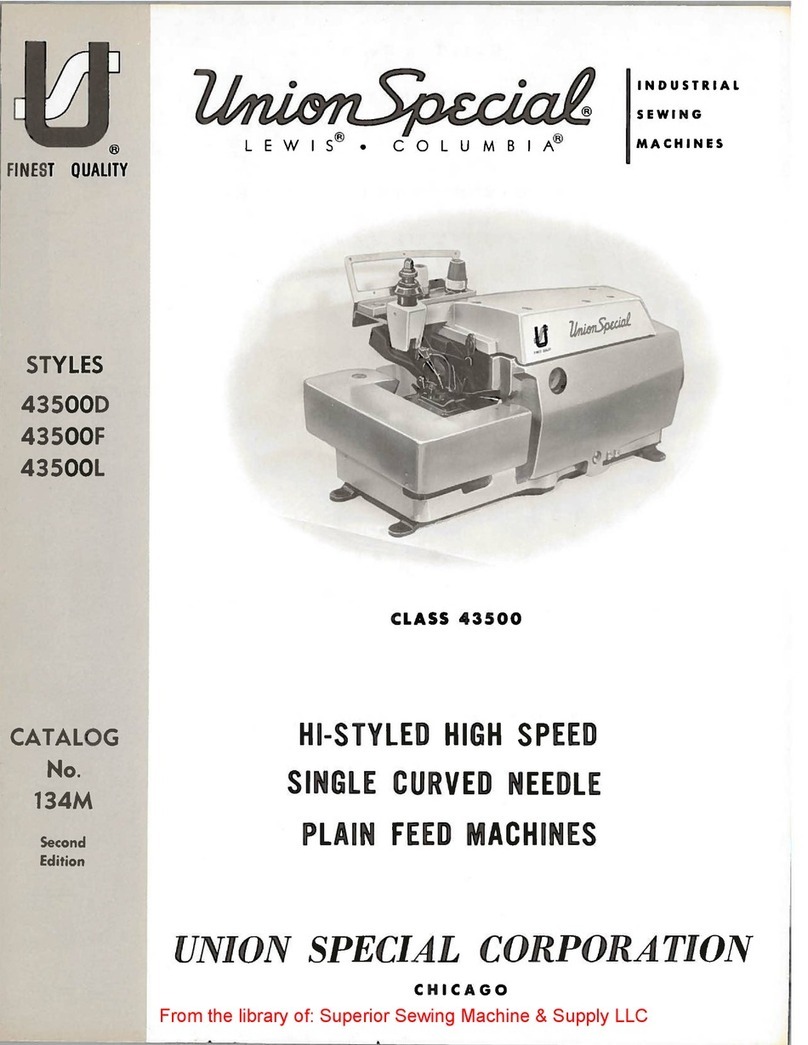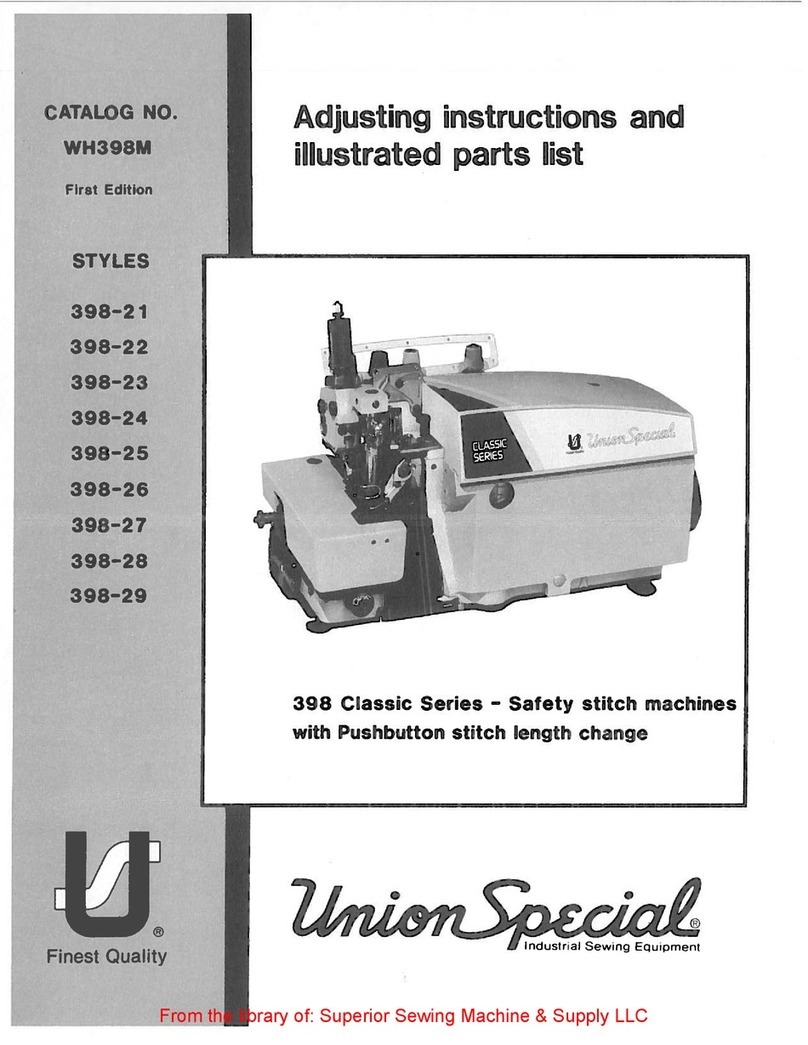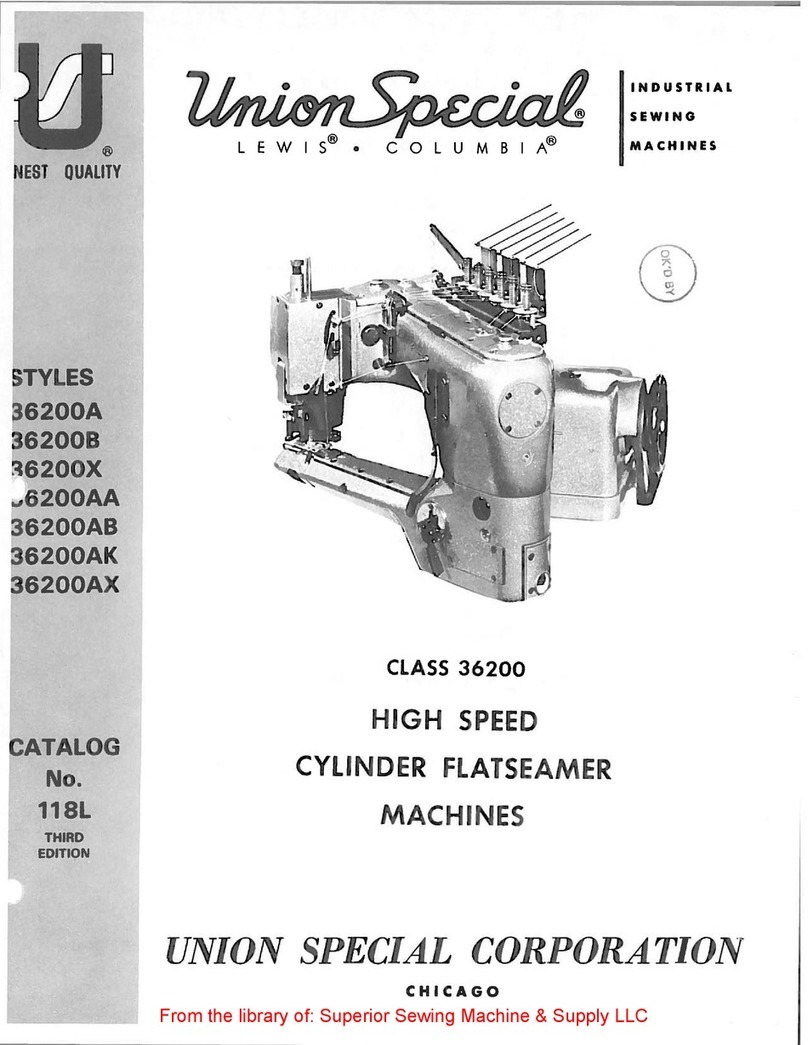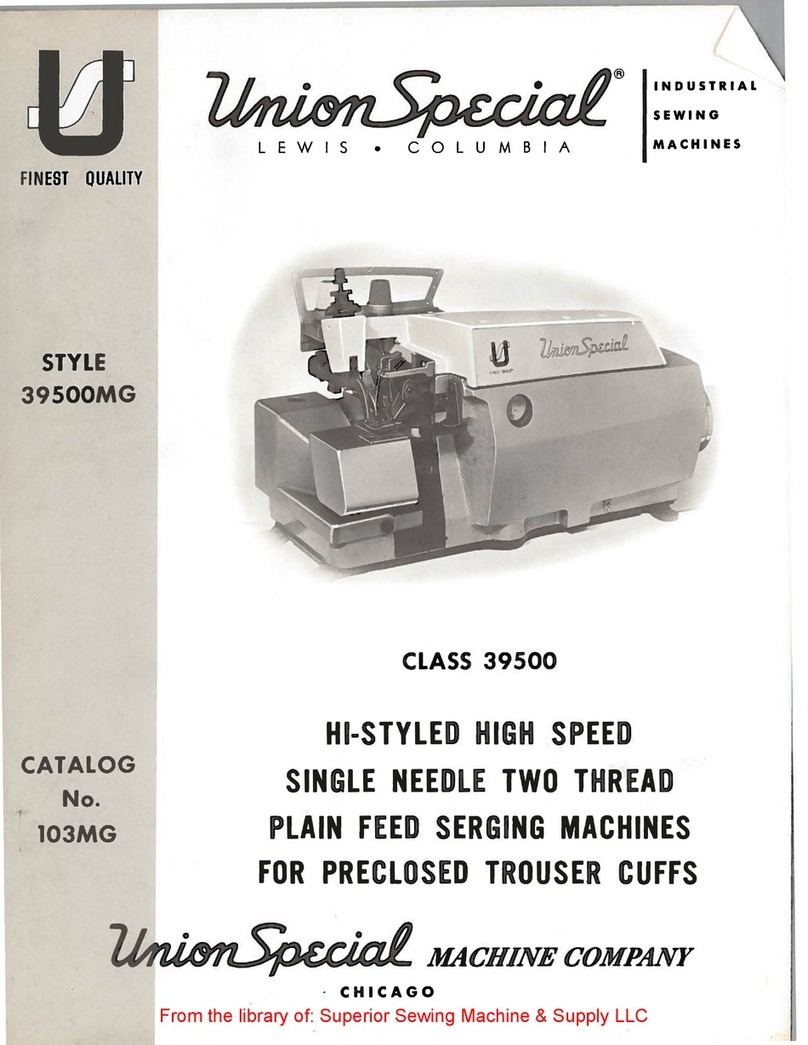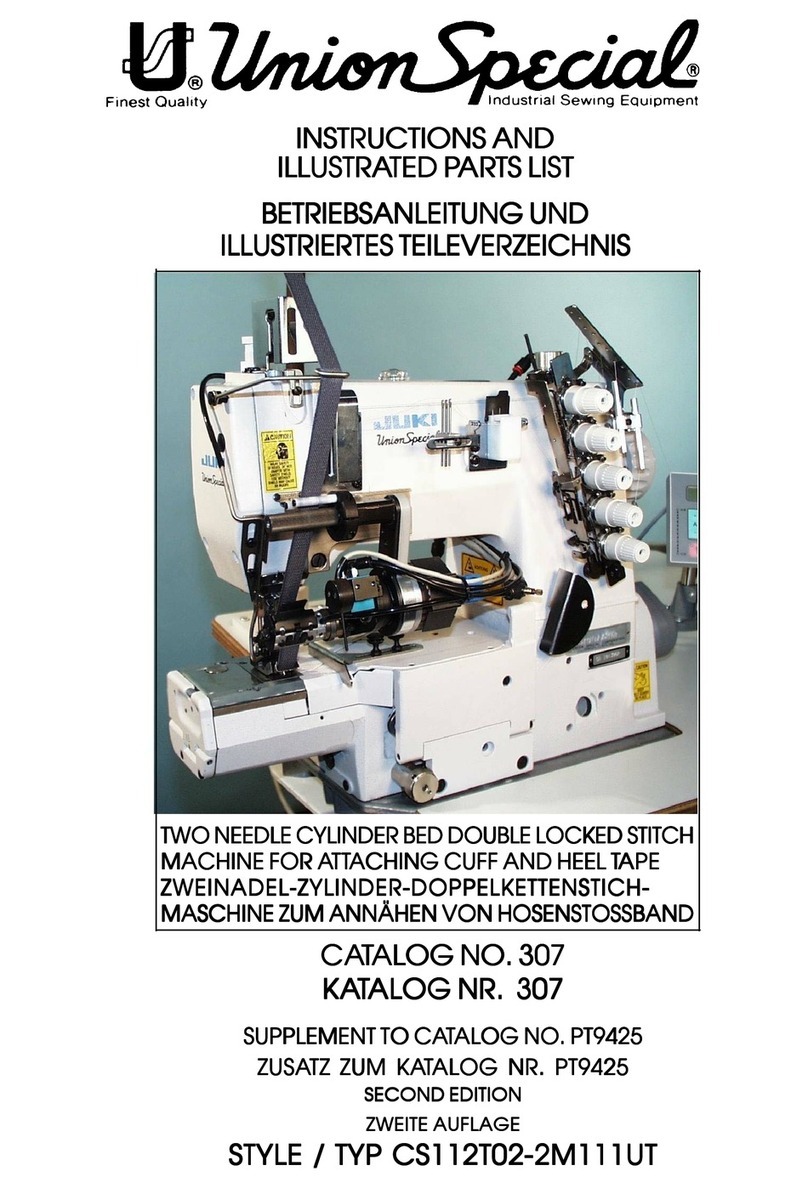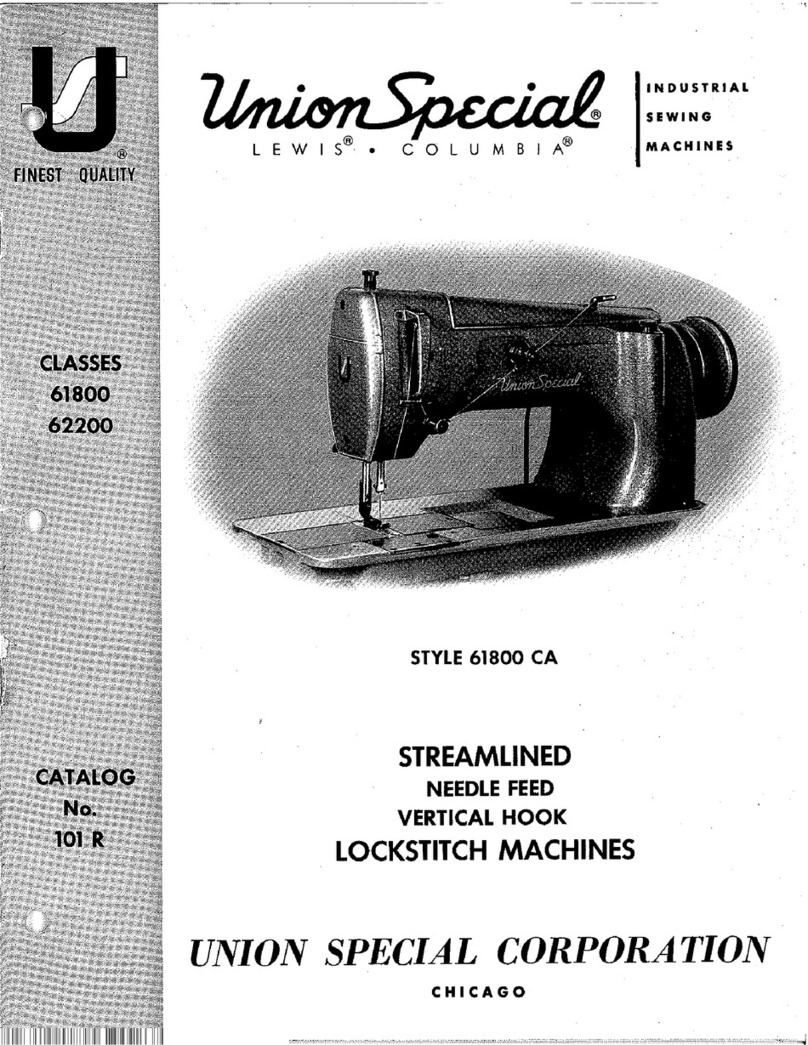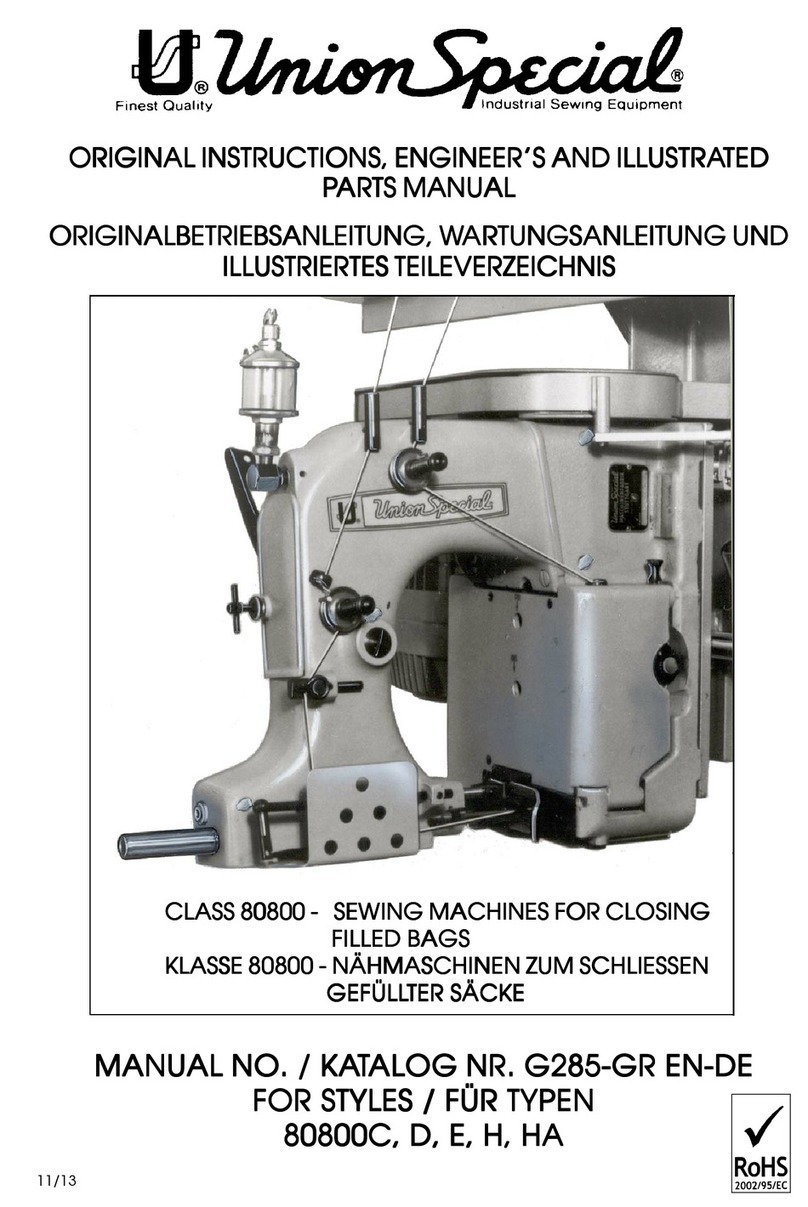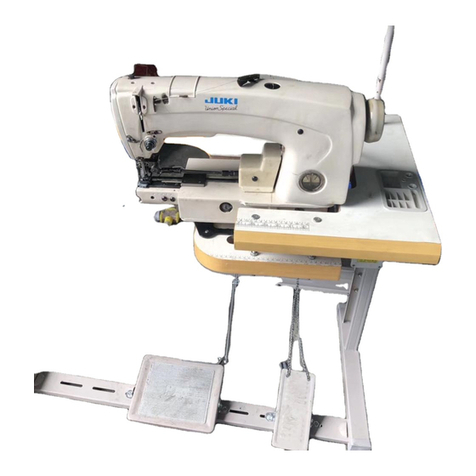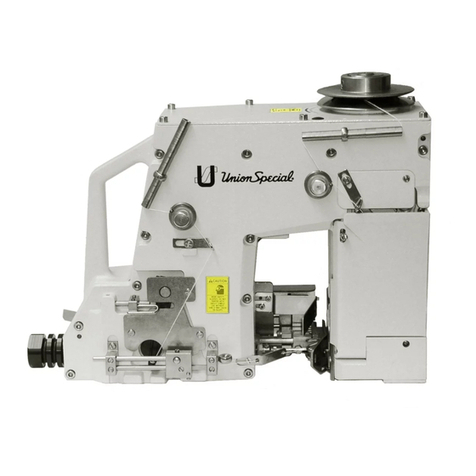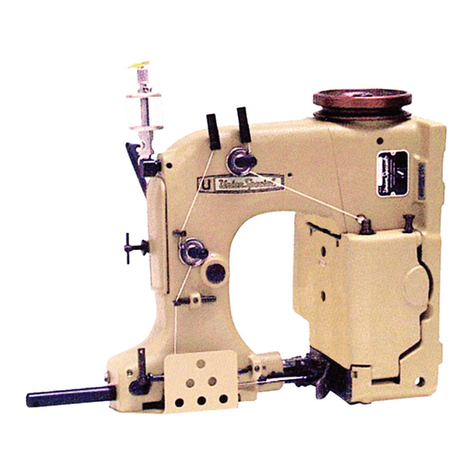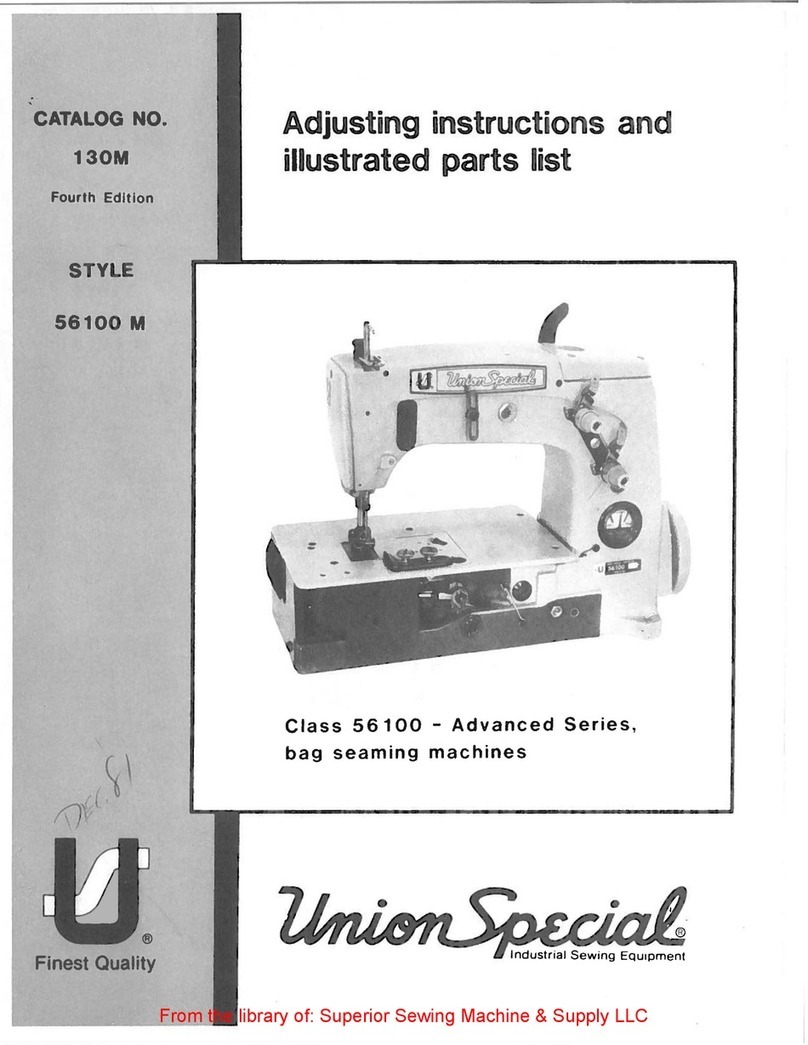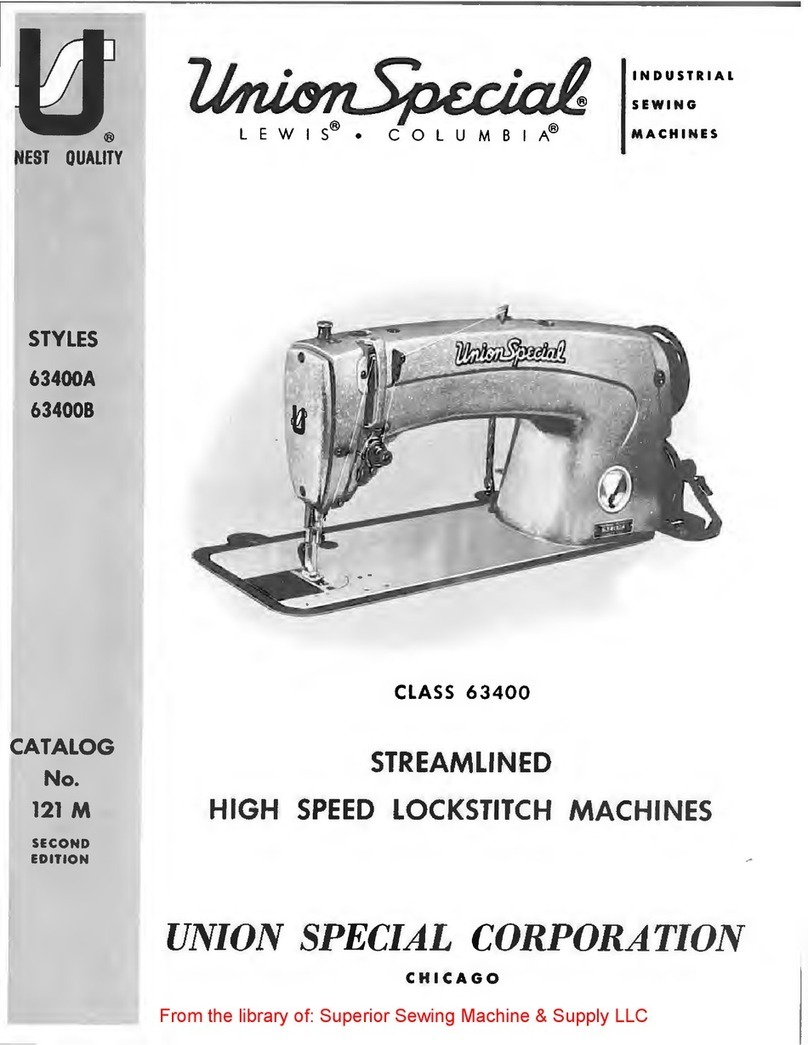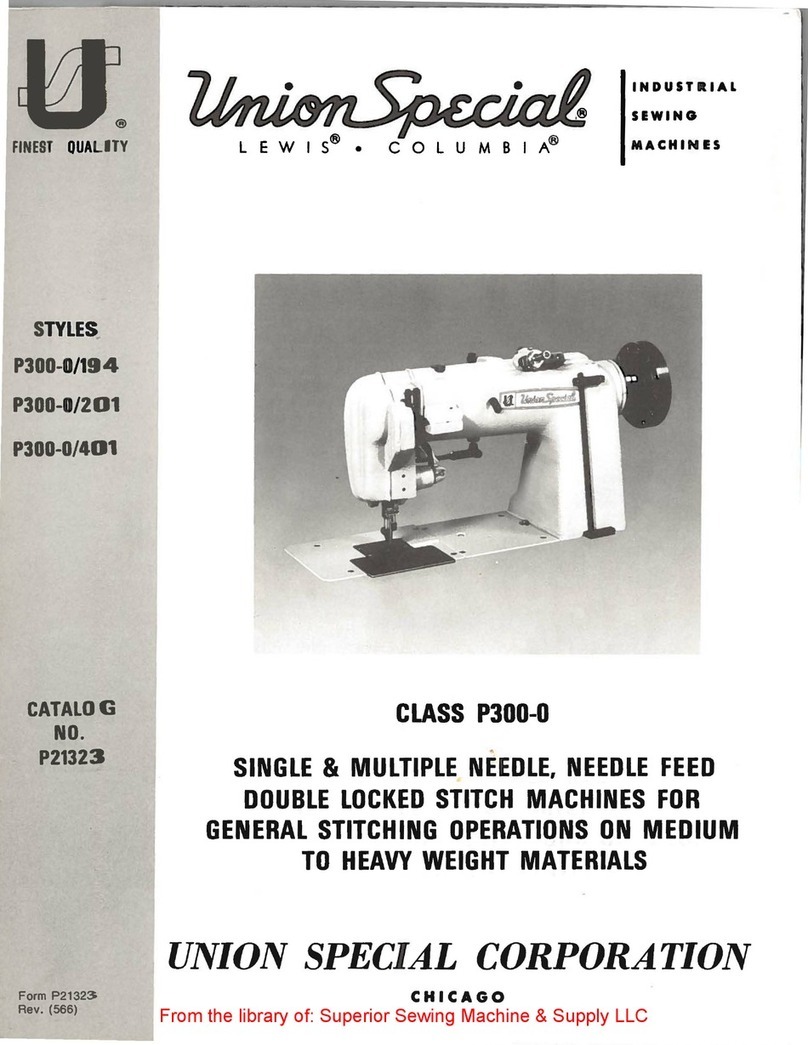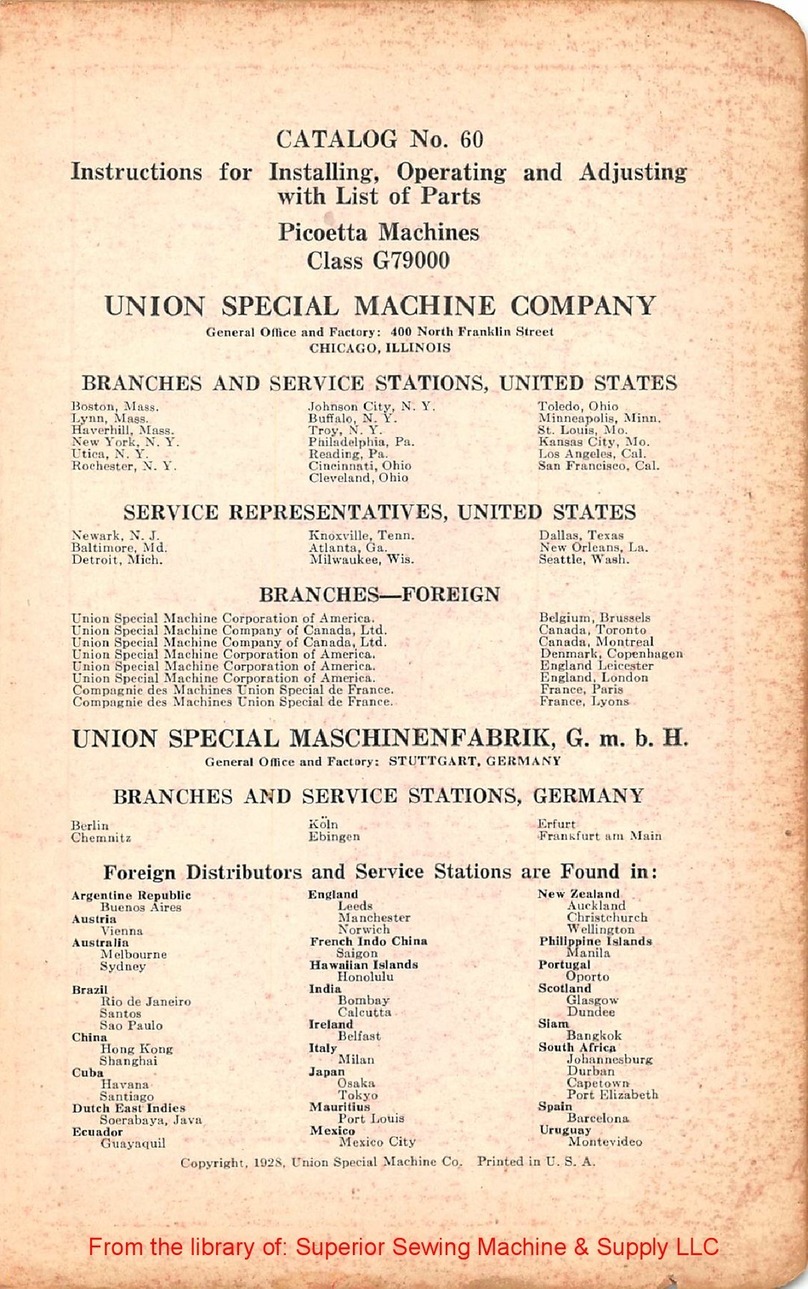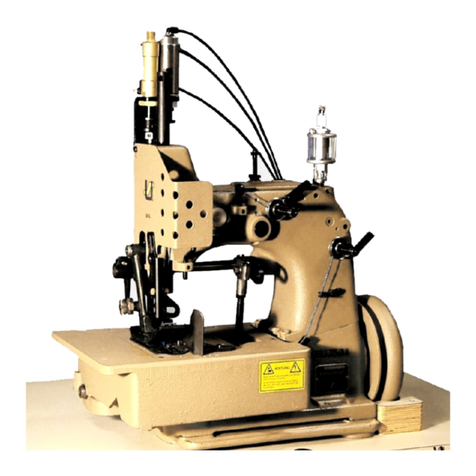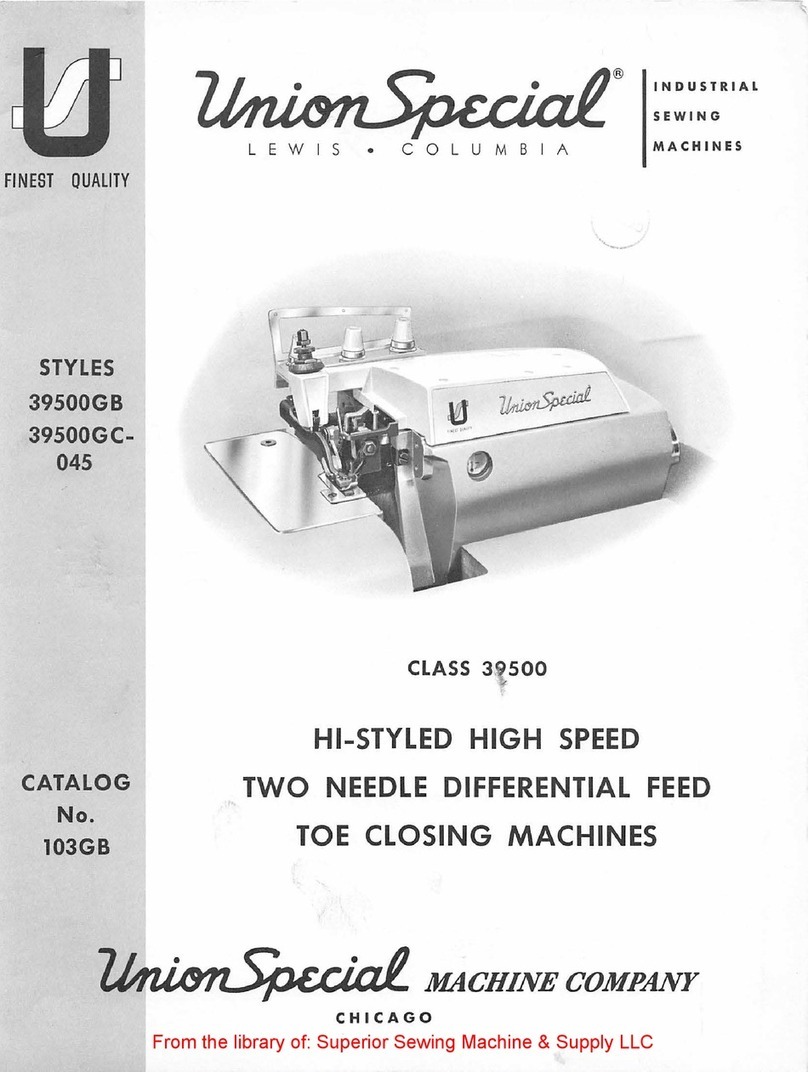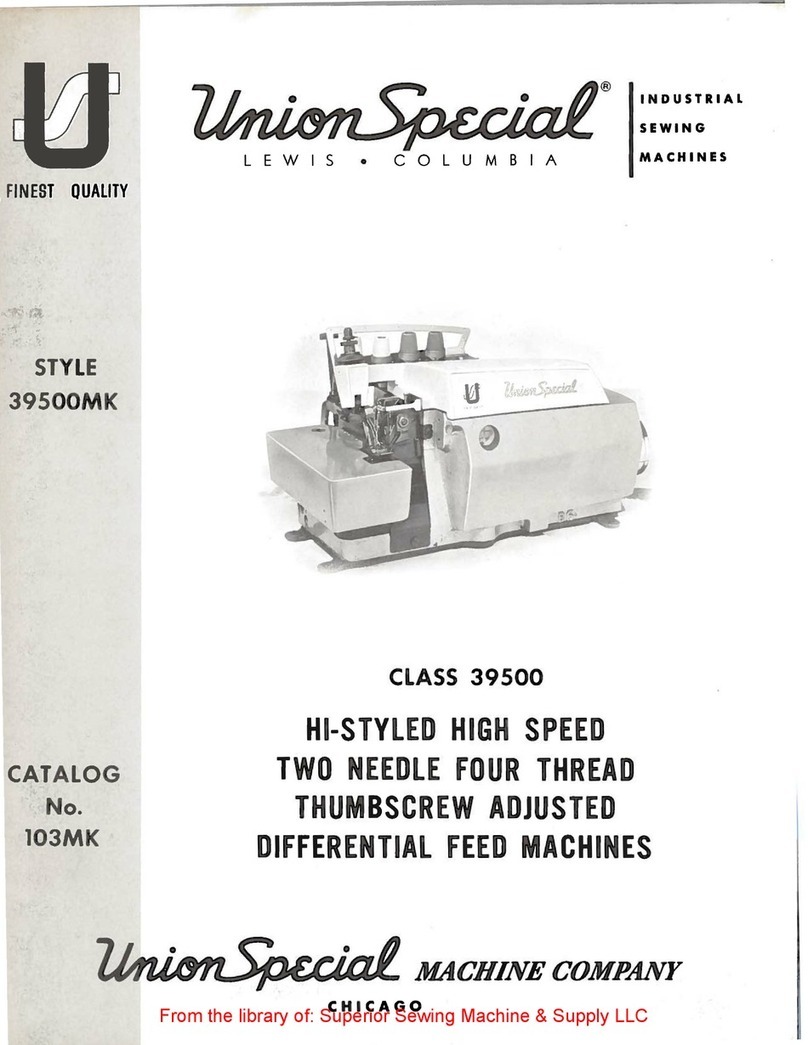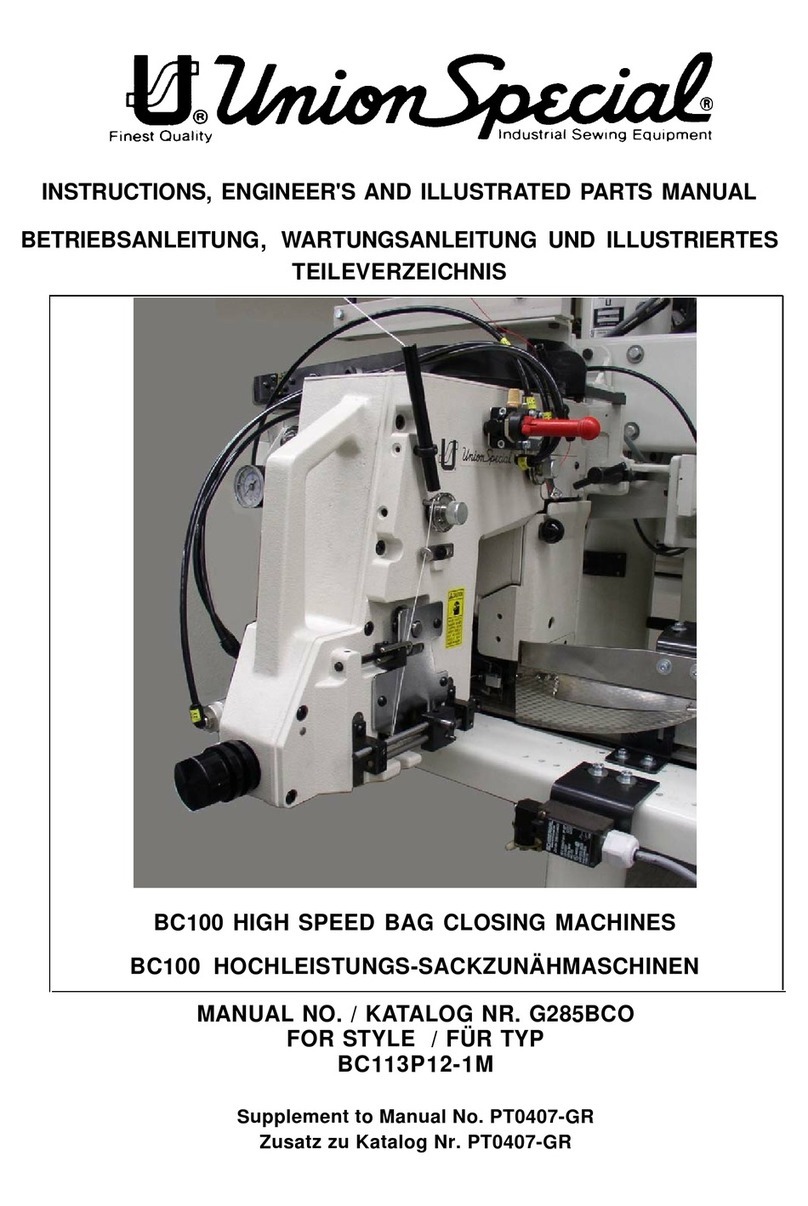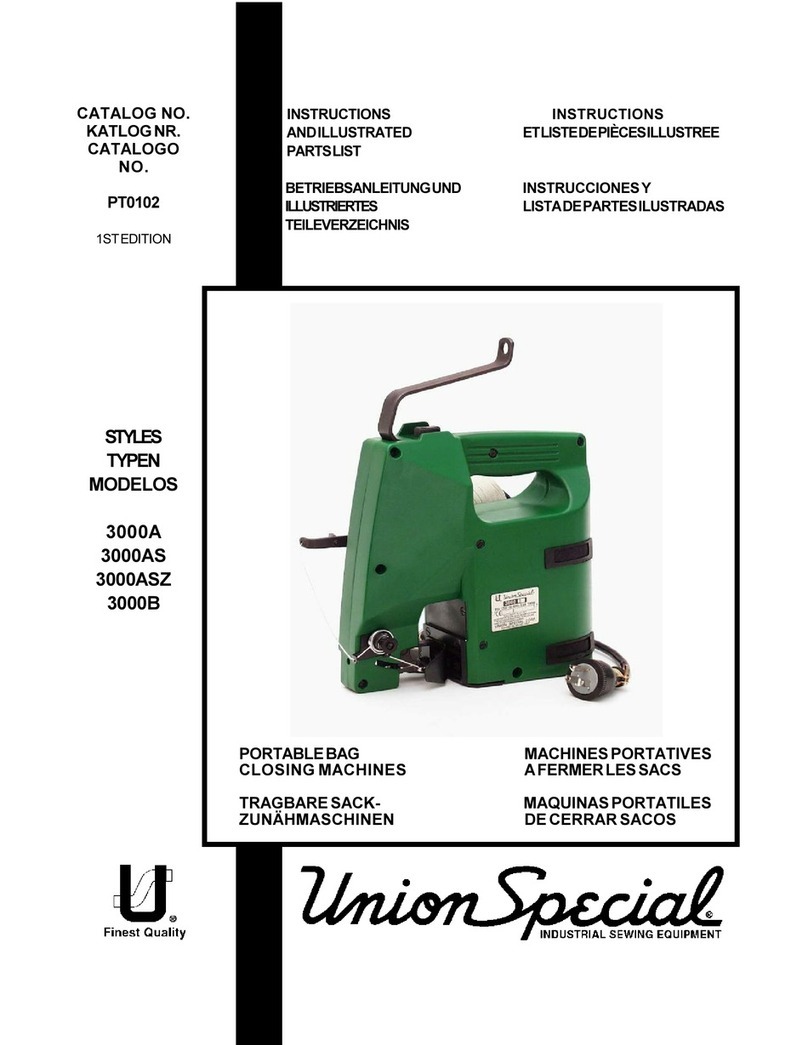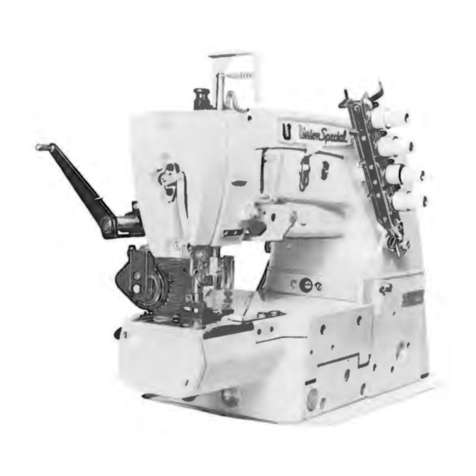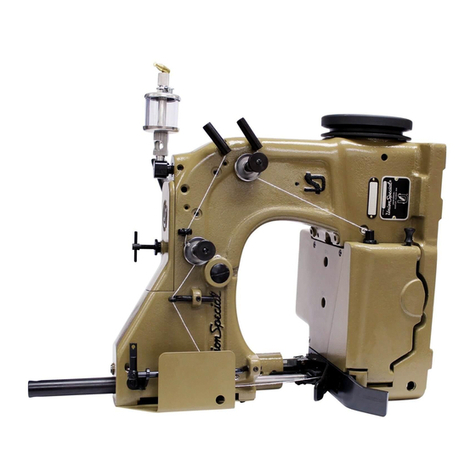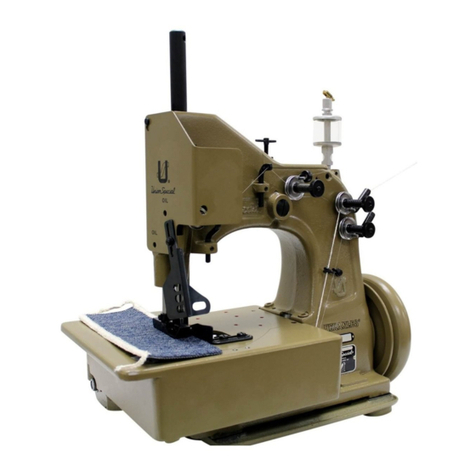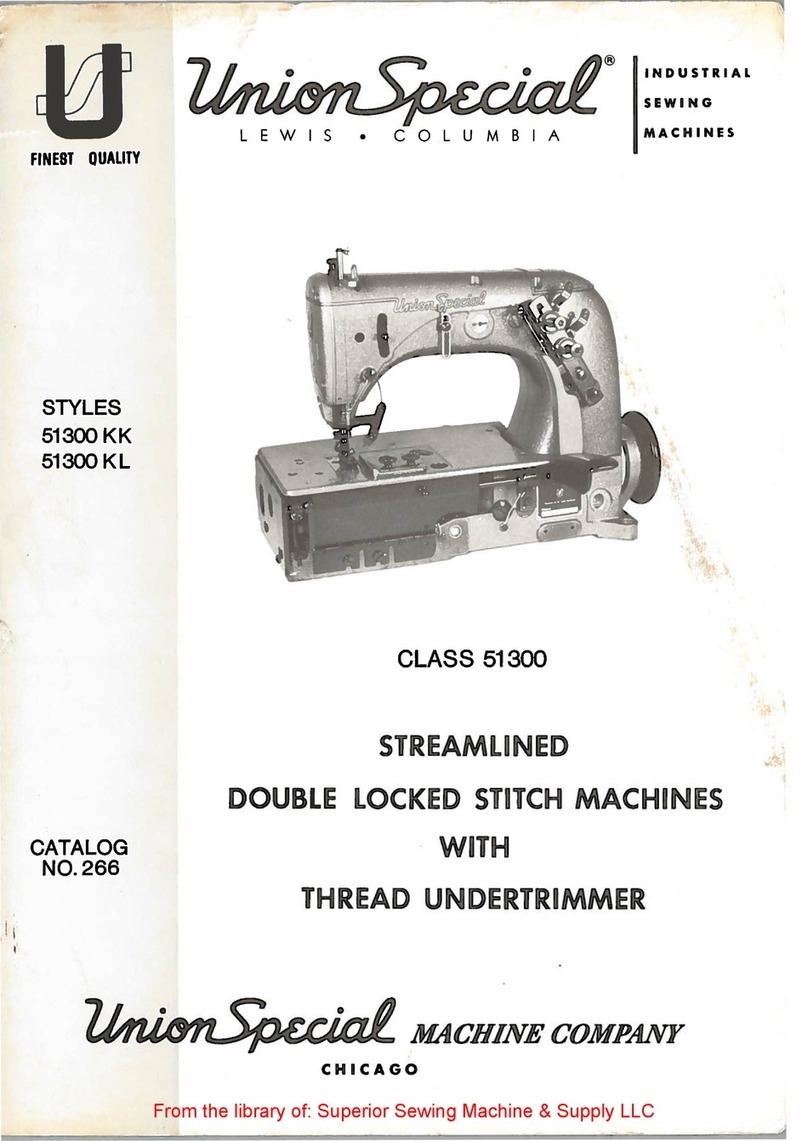
ADJUS
TING INSTRUC
TIONS (C
ontinued)
the center of plunger insett main shaft gear (B) in position on the shaft and tighten
pointed spot screw in the groove of the main shaft; also tighten set screw in gear.
You will note that the left hand penetration of needle is
into the lining and at this time the lower plunger does not
raise high enough to meet the needle. Therefore, the tim-
ing of the needle and plunger can only be accomplished on
right hand penetrationof needle. You will also note that the
movement of needle bar is from side to side on every other
penetration of the needle, which is necessary in joining the
lining to body of garment. In case the plunger itself gets
out of time, it may be retimed through the plunger pinion
(D, Fig" 1) on the main shaft. The plunger is set correctly
if the LowEST point to which the plunger descends is the
same on two consecutive revolutions of the handwheel.
NOTE: The plunger must be at its highest
point and stationary while needle penetrates
the material. After the stitch is completedthe
plunger descends and material moves forward.
TIMING HOOK WITH THE NEEDLE
If thread breakage occurs, the most prob-
able cause is incorrect timing of the hook. To
properly time the hook, the following procedure
must be carefully followed.
Remove hook gear cover (A, Fig. 5) at the
back of the machine. Turn the handwheel in
the operating direction until needle starts its
penetration stroke on the left side. Continue
turning the handwheel until the needle has
completed its forward stroke and has returned
3
| 32 inch. The hook point should be directly
over the center of the needle. Should it be
necessary to move the hook, loosen set screws
(A, Fig. 6) in the upper gear and rotate hook
until hook point is over the center of needle.
Retighten screws. Note the timing marks (B) Fig. 6
on theupper and Iower gears. The two marks, one on each gear, shouldbe opposite
each other. The gears are marked so that after correct timing has beenachieved,
the lower gear can beremoved for cleaning or the removal of fouled-up thread from
the hook without disturbing the hook - needle setting.
NOTE: To eliminate incorrect settings dueto back-
lash in hook timing mechanism, backlash should be
taken up by turning hook gear (C, Fig. 6) in clock-
wise direction.
SETTING THE HEIGHT OF HOOK
The hook height is relative to the needle and
generallyadjustment is notnecessary as it is set at
the factory. The hook point should be set . 00
5 to
.010 inch above the needle. Change in needle size
will require resetting of the hook"
Fig. 5
Fig" 7
